Video: During Demolition, One Last View from the Old Bay Bridge
In the shadow of the glistening, problem-wracked new Bay Bridge, the original eastern span is coming down piece by piece.
A few weeks ago, equipped with standard-issue hard hat, bright orange safety vest, plastic goggles and borrowed work boots, I venture onto the live demolition site.
Approaching from the Oakland side, we take an access road that feeds into the severed lower deck of the original span. As we pass through the first of three security checkpoints, the scene turns apocalyptic — a single truck driving down the center of an abandoned roadway.

Behind a second and then a third security gate, construction materials appear strewn along the side of the road. A little further, the hum of traffic on the new, neighboring bridge is slowly replaced by the din and whir of construction.
About a dozen vehicles are parked in front of a final gate — the last few hundred yards are traveled on foot. Stepping out of the truck and onto the concrete deck stripped bare of asphalt, I pass a pile of twisted metal. It's a discarded traveler, part of a scaffolding system that maintenance workers used to access hard-to-reach parts of the old bridge.
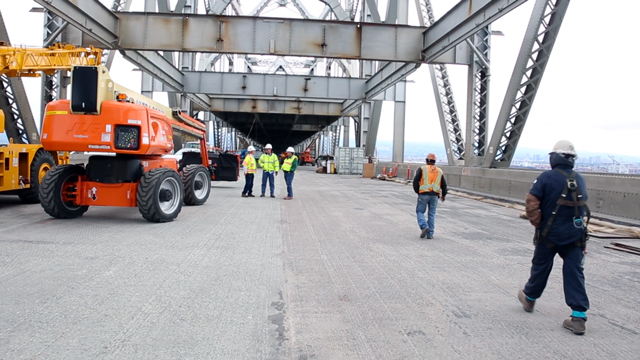
Continuing west: The darkness of the lower deck fades away as you walk out of the shadow of the upper deck.
Workers mill around the last 100 yards of the eastern section of the bridge, marked by a final barricade with the warning: “Active Demolition, No access beyond this point.” A forklift rumbles by, and I can feel the bridge wobble and sway beneath me.

Work is temporarily halted on account of wind direction. About a dozen men stand around, waiting for the headlong easterly winds to shift south-southeast so that any potentially noxious debris set loose by cutting through 80-year-old steel can be carried away from workers on both bridges, old and new.
The delay lets me slip behind the final barricade and walk to the edge. The first part of the eastern span to go is the cantilever truss section, starting with the suspended span stretching between the two towers. Now the old east span is in two parts, separated by a 500-foot gap — and the bay, 300 feet below.
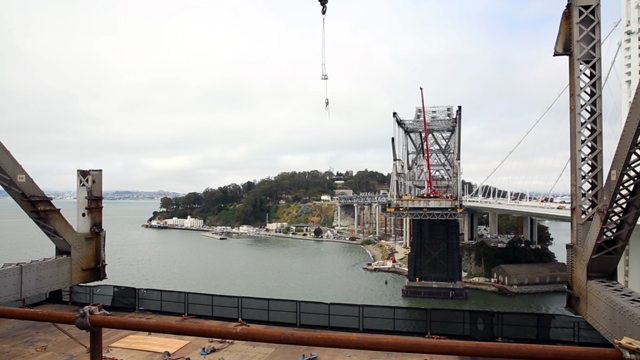
Stretching out from under the edge is a roughly 50-foot wooden platform,strewn with cables and construction debris. This platform, and the slanted wooden structures along the sides of the bridge, serve as mobile debris shields intended to prevent as much as 95 percent of construction debris from falling into the bay, according to chief project engineer Bill Howe.
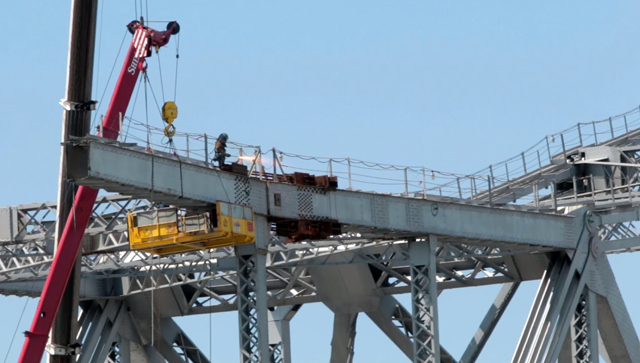
Once the wind cooperates, work continues. Several men don headgear and pile into a yellow metal basket that hoists them even farther above the bay. With temporary support beams in place, the men resume the arduous task of cutting through the superstructure, severing steel columns that will then be lifted out of place, piece by piece.
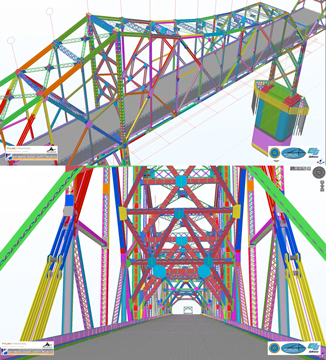
According to Bill Howe, one of the goals of the demolition project was to have it take place essentially in the reverse order in which the bridge was constructed. Engineers consulted a collection of photographs on display at UC Berkeley’s Bancroft Library documenting the bridge’s construction from 1933 to 1936.
“If you look at those photographs, and compare them to the way the dismantling is going, they’re very nearly identical. It’s just the reverse order of the way the bridge was built,” Howe says.
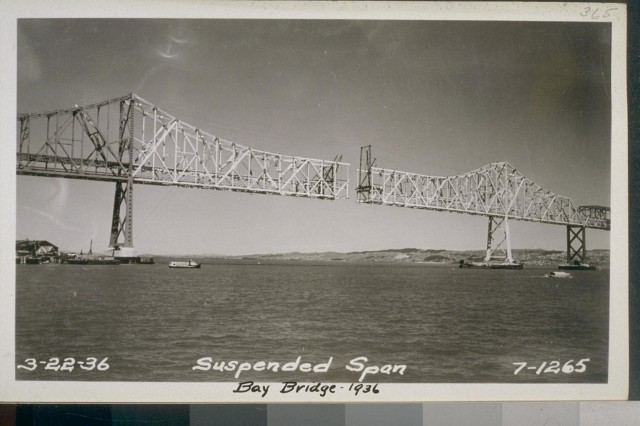
The complete demolition will take three years — the same amount of time it took workers to construct the entire original bridge in the 1930s.
According to Howe, “It’s out with the old and in with the new.”
